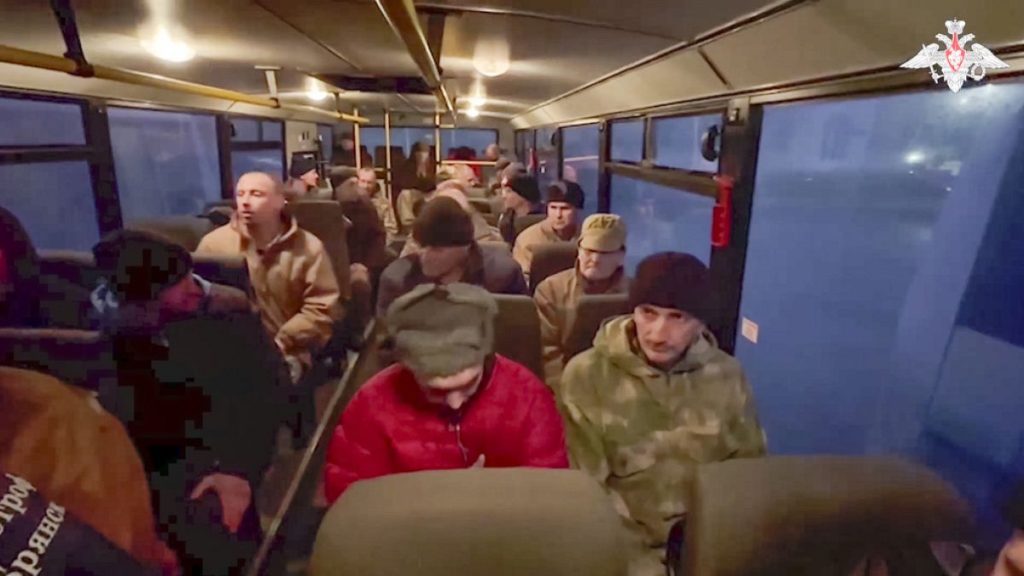Paragraph 1: Context of the Prisoner Exchange
The ongoing conflict between Russia and Ukraine has witnessed numerous instances of prisoner exchanges, reflecting the complex and often brutal nature of the war. These exchanges are not merely logistical exercises but deeply symbolic events, representing a glimmer of humanity amidst the devastation. They offer a lifeline to captured soldiers, allowing them to return to their families and escape the harsh realities of captivity. The latest prisoner exchange, facilitated by the United Arab Emirates, highlights the role of neutral parties in mediating humanitarian efforts during times of conflict. The UAE’s involvement underscores the growing international concern for the welfare of prisoners of war and the desire to mitigate the human cost of the war.
Paragraph 2: The Mechanics of the Exchange
The prisoner swap involved intricate negotiations and logistical arrangements to ensure the safe and simultaneous transfer of hundreds of soldiers. Both Russia and Ukraine had to verify the identities of the prisoners, assess their health conditions, and secure their transportation. The involvement of the UAE likely provided a neutral ground for these complex operations, minimizing the risk of escalation or mistrust between the warring parties. The exchange likely involved detailed protocols and communication channels to guarantee the smooth execution of the operation. The sheer number of individuals involved underscores the scale of the conflict and the significant number of lives impacted by the war.
Paragraph 3: Differing Numbers Reported
Initial reports from Russia and Ukraine indicated a discrepancy in the number of prisoners exchanged. Russia’s defense ministry announced the return of 150 of its soldiers, while Ukrainian President Volodymyr Zelenskyy reported the return of 189 Ukrainian soldiers. This discrepancy could stem from several factors, including variations in how each side counts exchanged personnel (e.g., including or excluding civilians, or individuals of different statuses). It’s also possible that the exchange involved multiple stages or locations, leading to different tallies depending on the timing of the announcements. Clarification of these numbers is crucial for transparency and accountability in prisoner exchange processes.
Paragraph 4: Humanitarian Significance of the Exchange
Beyond the political and strategic implications, the prisoner exchange carries immense humanitarian significance. For the returned soldiers, it marks the end of an ordeal filled with uncertainty, fear, and potential hardship. The physical and psychological toll of captivity can be profound, and the opportunity to return home provides a chance for healing and reintegration into society. The exchange also brings solace to the families of the released prisoners, who have endured the anguish of separation and the constant worry about their loved ones’ well-being. The reunion of families is a testament to the enduring power of human connection amidst conflict.
Paragraph 5: The UAE’s Role as Mediator
The United Arab Emirates’ involvement in brokering the prisoner exchange highlights its growing role as a mediator in international conflicts. The UAE’s neutral stance and its established diplomatic channels with both Russia and Ukraine enabled it to facilitate communication and build trust between the warring parties. This act of mediation demonstrates the potential for neutral states to play a constructive role in mitigating conflict and fostering dialogue. The UAE’s success in facilitating this complex exchange could encourage further involvement in future humanitarian efforts, potentially contributing to de-escalation efforts.
Paragraph 6: Broader Implications for the Conflict
While the prisoner exchange offers a moment of respite, it is important to acknowledge its limited impact on the overall trajectory of the conflict. The exchange does not signal an end to hostilities or a shift in the strategic objectives of either side. However, it does offer a small window of opportunity for building confidence-building measures and potentially laying the groundwork for future negotiations. The humanitarian gesture could, in the long term, contribute to a more conducive environment for dialogue and perhaps even a path towards a peaceful resolution. While cautious optimism is warranted, the complex dynamics of the conflict necessitate a realistic assessment of the limitations of such exchanges in resolving the broader political and territorial disputes at the heart of the war.

